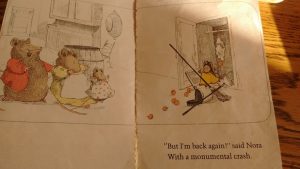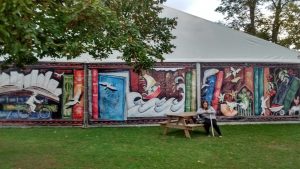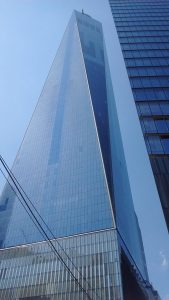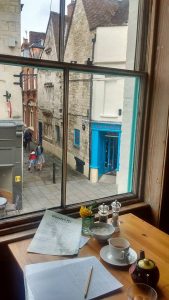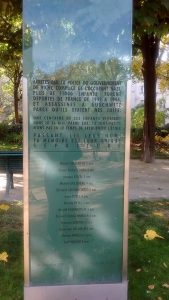I read fifty books this year. I had to, because it was the target I set on Goodreads, and we mustn’t fail targets. I’m setting a lower target for next year, though, for reasons I shall elaborate on in a later post.
Among those fifty, there were quite a few to which I awarded five stars. More than ten, certainly. So to distinguish between a great (5-star) book and one that’s nudged onto this list, I’ve used here the ones that absolutely thrilled me.
I don’t mean in terms of suspense (well, not just that). I mean the emotion and linguistic skill and plotting electrified me with every page. Read on, enjoy my very favourite quotes, and take note for future reading lists!
MaddAddam by Margaret Atwood: Shiver-worthy dystopian read of my year
I chose the final book from the Oryx and Crake trilogy for its exploration of the storyteller’s role in a culture. Each sentence reveals volumes about Atwood’s imagined dystopia, a world controlled by corpocracies. For example, this was published in 2013 but references a border wall keeping refugees from climate-ravaged Texas out of the other states. Oh, the irony.
‘Is that what writing amounts to? The voice your ghost would have, if it had a voice?’
A Hologram for the King by Dave Eggers: Wince-for-the-protagonist book of my year
Our hero, Alan flounders in his foreign setting, but he knows some good jokes, and loves his daughter so much, I rooted desperately for him. Presented in short, snappy segments, it’s almost as if the whole book is an attempted letter from Alan to his daughter, with bits of story interrupting. Perhaps that’s how Alan sees life, and it’s causing him to come undone.
‘It becomes a process of choosing the one or two people you try hardest not to disappoint. The person in my life I am determined not to disappoint is you.’
Let’s Pretend This Never Happened: A Mostly True Memoir by Jenny Lawson: Laugh-aloud book of my year
I first encountered Lawson’s fantastic sense of humour and (mis)adventure a few years ago through her blog post about the Bear’s Head. I especially admire her for the joy she derives from her quirky family, talking dead squirrels and all.
‘This must be what love is. When you want to make it less difficult for someone to murder you.’
A Team of Rivals by Doris Kearns Goodwin: Edifying nonfiction read of my year

Goodwin’s research makes the already-known sad ending all the more poignant by including the grief of those closest to Lincoln (even the ones there reluctantly) and also by offering evidence that Reconstruction and civil rights issues could have been less painful under his continued guidance.
‘A government had better to go to the very extreme of toleration, than to do aught that could be construed into an interference with, or to jeopardise in any degree, the common rights of its citizens.’ —Abraham Lincoln, quoted in Goodwin’s book. (The founder of the Republican party, ladies and gentlemen.)
Freedom by Jonathan Franzen: Most redemptive characters read this year
Some found this hard to finish because they found the characters unappealing. But they resonated with me because no matter what mad, reckless things they did, they were just seeking approval. The central family moves from feeling that obligation is a symptom of attachment, to understanding that freedom is a required preexisting condition for genuine love.
‘Compliments were like a beverage she was unconsciously smart enough to deny herself even one drop of, because her thirst for them was infinite.’
Human Acts by Han King: Shock and awe book of my year
Did you know there was a terrible massacre in the Gwangju Province of South Korea in 1980, perpetrated by the government? Neither did I, until I read this. A book so engrossing I didn’t want to put it down, so sad I had to pause my reading while on holiday, yet so haunting I couldn’t cheat on it with any other story.
‘Conscience, the most terrifying thing in the world…I remember feeling that it was all right to die; I felt the blood of one hundred thousand hearts surging together into one enormous artery, fresh and clean…I dared to feel a part of it.’
The Paying Guests by Sarah Waters: Dread-the-ending book of my year
Reading this, I was almost physically sick with fear that things wouldn’t work out for Waters’ heroines falling in love with each other in the early ‘20s. But as with Fingersmith, she didn’t let me down. She recreates the ravages of a love affair as vividly as she does the tragedies and minutiae of history.
‘Would it be all right, wondered Frances, if they were to allow themselves to be happy? Wouldn’t it be a sort of insult to all those others who had been harmed? Or oughtn’t they to do all they could—didn’t they almost have a duty—to make one small brave thing happen at last?’
Here I Am by Jonathan Safran Foer: Sweeping epic read of my year
Epic? Should I really be comparing tales of a relatively privileged American family in NYC to something like Lord of the Rings? Well, I find the daily struggles for meaning and validation to be quite stirring, especially against an imagined (for how long?) backdrop of all-out war in Israel and the Middle East. Foer plays these parallels off each other expertly.

‘And the inexplicable, unreasonable, illogical emotions and behaviour of parents can be explained, by having had to believe for the better part of a year [leading up to the birth]. Parents don’t have the luxury of being reasonable, not any more than a religious person does. What can make religious people and parents so utterly insufferable is also what makes religion and parenthood so utterly beautiful: the all-or-nothing wager. The faith.’
The Help by Kathryn Stockett: Top inspirational read of my year
We all need the occasional reminder that courage and unity are powerful, that women from all skin colours and walks of life can initiate change when we come together, and that telling your story, or writing someone else’s down on their behalf if needed, can make a difference. This was a perfect reminder of that for my 2018.
‘And then she say it, just like I need her to. “You is kind. You is smart. You is important.”’
The Hotel New Hampshire by John Irving: Evangelistic read of my year
The one I HAVE to tell everyone about.
From the title of the first chapter (‘A Bear Called State o’ Maine’) I was hopelessly in love. Irving’s imagination is wild, shoving the quirkiest characters in the most unexpected directions. But somehow, it all comes together as every little detail, no matter how goofy it once seemed, becomes wholly relevant by the end.
‘”Being a star is easier,” Fanny would say. “You just be relaxed and hope that the you in you comes across.” For a writer, I guess, the you in you needs more nourishment to emerge.’
What were your favourite reads from the past year?


